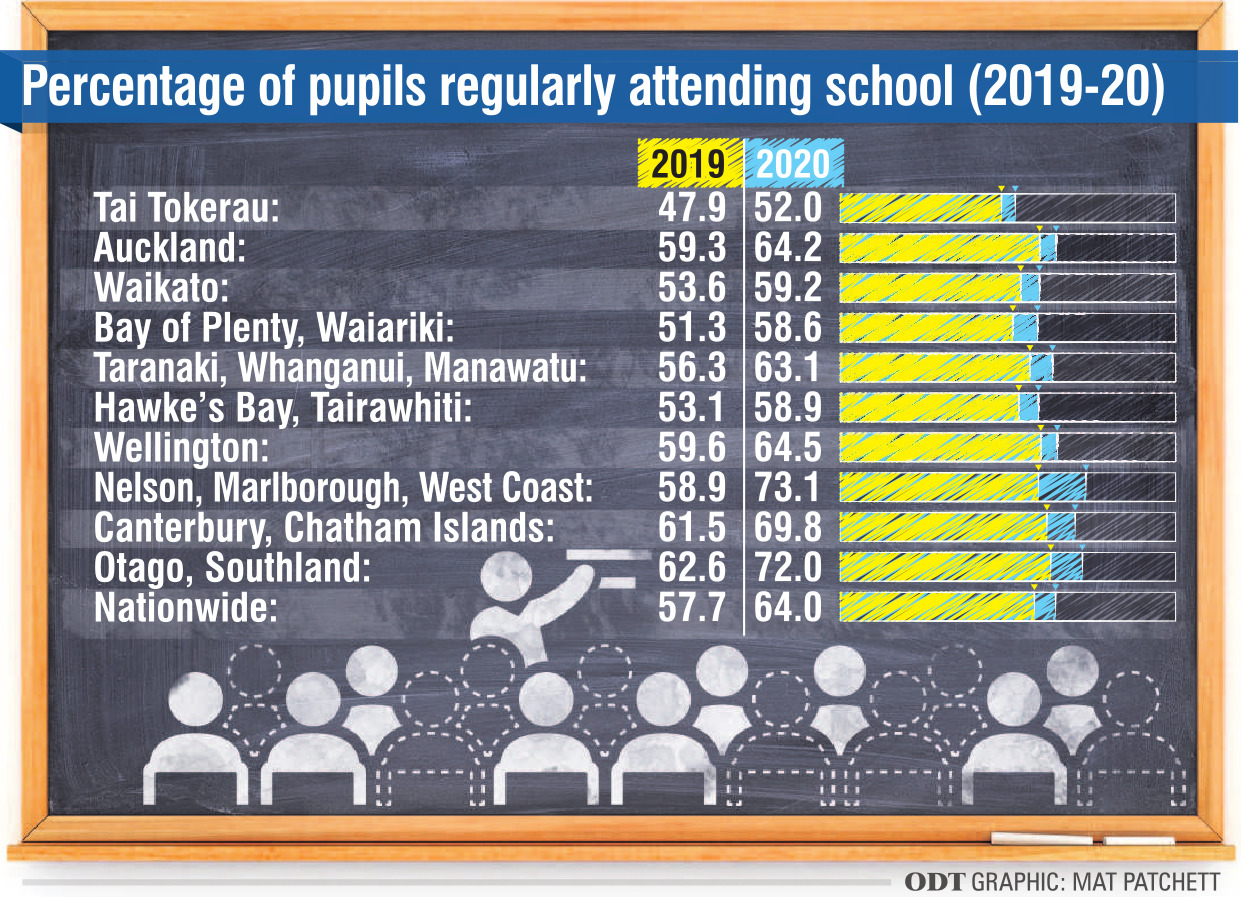
While absenteeism appears to be high in the region, a Ministry of Education attendance report shows it is an improvement on the previous year (2019), when 37.4% of pupils were regularly absent from school.
Nationwide, the rate of regular absence also dropped from 42.3% to 36.0% in 2020.
The majority of absent pupils were in secondary education.
The annual report measures the percentage of pupils who attend school during term 2.
However, the report writers said the 2020 term 2 (April 14-July 3) attendance statistics may not be easily compared with previous years, because the term had been affected by the Covid-19 pandemic.
Schools were closed during the lockdown (between April 27-May 13) and all pupils were coded as "learning off site".
So only data from the last seven weeks of the term (when pupils returned to school) was used.
Following the end of the national lockdown, the percentage of pupils attending school regularly recovered after a drop in 2019.
Otago Secondary Principals’ Association president and Blue Mountain College principal Lindy Cavanagh-Monaghan questioned the statistics, and said they would be a cause of concern if they were taken at face value.
"Any principals I have spoken with were shocked by the percentages for our part of the country, despite them being the best of a bad bunch.
"Our data analysis shows attendance rates to typically be in the high-80% to mid-90% range and relatively consistent over time.
"We need to do a deeper dive into how the data was filtered and aggregated, to understand why there are such large discrepancies between these figures and what our experiences are on the ground."
Setting aside the validity of the data, she said both pupils and parents gained a whole new level of appreciation of the value of face-to-face teaching and learning during Alert Levels 4 and 3.
"The teaching staff across our region did a fantastic job of delivering quality online learning under challenging circumstances, but I know in our case the students couldn’t wait to get back to school as soon as it was deemed safe for them to do so."
High attendance was important because it was linked to both pupil wellbeing and qualification attainment, she said.
Recent Ministry of Education research shows each additional half-day absence from school predicts a consistent reduction in the number of NCEA credits a pupil subsequently attains — whether that is the pupil moving from 100% to 99% attendance or moving from 71% to 70% attendance.
Pupils who were absent even 5%-10% of the time (still considered regular attendance) obtain fewer NCEA credits than those with slightly higher attendance.
"So principals will, as always, be working hard and accessing support from outside agencies, to assist parents/caregivers in addressing any individual cases of truancy," Ms Cavanagh-Monaghan said.











